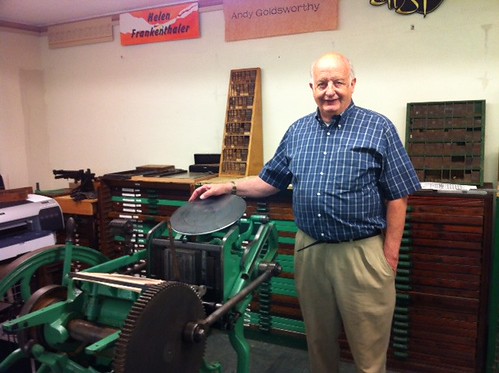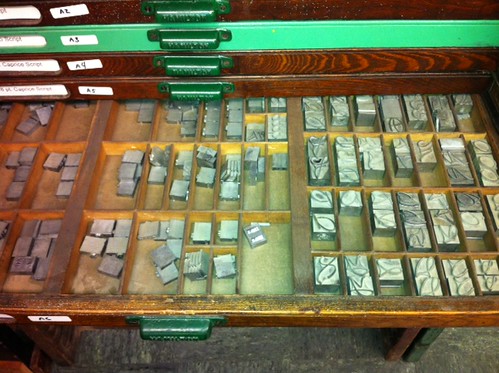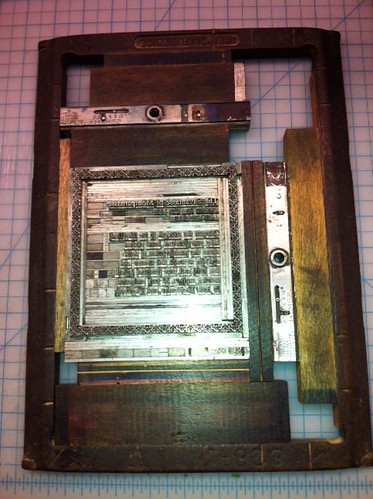This article is more than 5 years old.
By some very good fortune and the support of Dean Sutton, ZSR Library is the recipient of a complete print shop. The equipment came from a Winston-Salem citizen, Carl Hein, who spent his entire life in printing and packaging, retiring eleven years ago as the President of RJR Packaging. As a teenager growing up in the Pittsburgh area in the 1950’s, Carl ran his own printing company as he attended Carnegie Mellon University. The printing equipment has been in his family for 60 years, moved numerous times by Carl and his wife, Mimi, and has been well loved and cared for. We are fortunate to have it.
The equipment includes a 1906 Chandler & Price letterpress, an 1892 Peerless Gem paper cutter, 5 cabinets of lead type and all the tools needed for setting type and printing it.
Back in the day (and as recently as the 1950’s) type was set one letter at a time. Large cabinets of type were stored for different uses. One drawer might have Caslon 24 point and another Goudy Italic 12 point type inside. Type was placed in a drawer full of small compartments and stored with the most common letters near the front.
Typesetters memorized these letter locations so well, they could set type without a thought. Setting type is more like shop class than what we do today as we select a font and point size using a drop-down menu in Microsoft Word. In traditional typesetting, each letter of type is selected from a drawer, and placed in a composition stick which holds the type securely. The typesetting is done upside down and backwards.
The type is set into a galley which is essentially a flat tray, until it is ready to print. In order to print a body of type, it must be locked into a chase. The chase is a metal rectangle that holds the type securely for printing and which fits easily into the press. The type is held into the chase by pressure using small pieces of wood or metal, called furniture. Furniture is packed around the type until there is almost no space, when small slices of wood called reglets fill in any remaining empty space. Devices called quoins that can be expanded using a key create pressure on the type to make everything secure.
The chase is then locked into the press for printing. The press was made in Cleveland, Ohio in 1906 and weighs over 700 pounds. Seeing the press work is a marvel of design and function as pieces of the press move, roll and turn. The delivery of all this equipment was a complex operation of disassembling and re-assembling-plus lots of sweat and grunting by the moving crew. Thanks to Charles Bombeld, who helped Carl and I re-assemble the press and paper cutter. Please stop by Preservation for a first hand look at this equipment and an exciting future for it in ZSR.





4 Comments on ‘Letterpress Arrives at ZSR’
What a wonderful description of the press, Craig. We are so lucky to have it (and you)!
Great teamwork! Makes so much sense!
The possibilities are so exciting! I can’t wait to see what creative things our ZSR folks come up with.
Craig, you are as proud as a new daddy about that and it shows. The press is awesome, and I can’t wait to see some products!